A hot August sun punched through rain clouds as my wife Donna and I exited our truck at the Fannie Stebbins Wildlife Refuge, in Longmeadow, Massachusetts, now part of the Silvio O. Conte National Wildlife Refuge.
Great egrets stalked the edge of an ancient river channel. A woman, who had been photographing them through a lens longer than her arm, hurried by, announcing that she was again late for work. Presently, a tall young man walked over and greeted us.
He was Dr. Christian Marks, a floodplain ecologist with The Nature Conservancy’s Connecticut River Program.
Donna and I were there to learn about the role of floodplains in sustaining fish and wildlife and how the Conservancy and its partners are recovering floodplains along this 410-mile river draining Vermont, New Hampshire, Massachusetts and Connecticut.
Since his childhood on a New Brunswick farm Marks has been fascinated with trees. He studied them in his PhD and post-doc work. That perspective and knowledge proved invaluable to the recovery effort, particularly for finding, propagating and planting disease-resistant American elms.

In 2017 Suki Casanave wrote about the partners’ elm work for Cool Green Science. My assignment was to report progress since then—not just on elm recovery but recovery of the entire floodplain ecosystem.
I asked Marks what healthy floodplains do for wildlife.
“Some birds and mammals see the forest in terms of structure,” he replied. “Certain warblers, for example, like the tops of trees and don’t care what species as long as they’re tall. So it’s important to maintain the canopy. Wildlife species that depend on flowers and seeds need something all year. Migratory birds need something from the time they get here until the time they leave. Floodplain trees and shrubs produce flowers or seeds in small windows, and each does something different.”
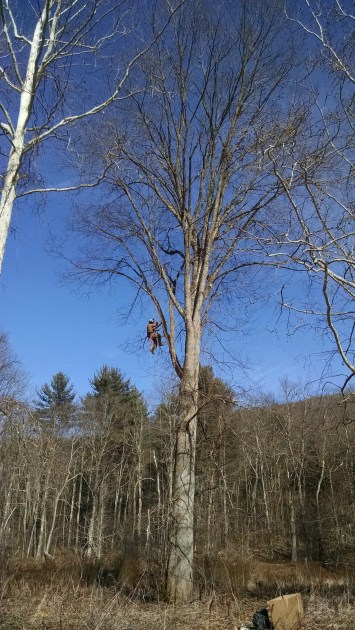
Spring can be tough on granivore rodents and birds, Marks went on to explain. Most berries have been eaten. Uplands green up, but with leaves useless to granivores.
Floodplain trees are the granivores’ salvation. They flower in late winter and produce seeds in spring. That’s part of the reason migratory birds follow the river north
These trees are adapted to spring freshets. If their seeds were dispersed in fall, they’d get buried by sediments and rot. When high water recedes in spring it leaves a perfect seedbed of fresh sediments.
Elms, highest in the floodplain, produce seeds first because that’s where the water first recedes, then silver maples, then cottonwoods, then willows—each following the elevation where it grows in the floodplain and each feeding different granivore birds as they arrive.
This fall the Conservancy will have attained its goal of restoring 223 acres of floodplain habitat at Fannie Stebbins. This acreage, along with the refuge’s existing floodplain forest, will constitute the largest connected expanse of natural floodplain habitats in the four Connecticut River states.
The Search for Disease-Resistant Elms
In 1928 an Asian fungus showed up in North America, but because it was first isolated by a phytopathologist from the Netherlands it was dubbed “Dutch Elm Disease.”
Previously American elms had been the oldest and most abundant floodplain species, filtering out sediments, reducing flood damage, providing food, cover and nesting habitat for terrestrial wildlife and shade and bank stability for fish.
“That’s a wild elm,” Marks declared, pointing to a sickly tree with a trunk about eight inches in diameter. “This is typically how big they get before they die. I look for ones that are at least three feet in diameter because they might have some resistance. We test those, and we’ve found a few that do have high tolerance. We plant them back in elm habitat so they can fulfill this niche of late-successional, canopy-dominant floodplain trees.”
Marks hunts for big elms anywhere and everywhere. The alien and native bark beetles that spread the fungus can’t fly far, so he’s not interested in big elms isolated in, say, city parks. The best candidates are survivors surrounded by dead elms.
“We have seven varieties of resistant American elm, and the Forest Service is propagating a few more that we’ll plant soon,” Marks continued. “For genetic diversity we want between 20 and 30. Otherwise we’ll have problems with inbreeding. Resistant elms are extremely rare; that’s why we have to do this work. If there were several in every forest, Mother Nature would take care of the disease with natural selection.”
In field trials, elm seedlings presumed to have a degree of resistance are injected with the fungus. Something like a third survive, and most of these show symptoms. If one remains in perfect shape, that’s a big win.
Crossing American elms with naturally resistant Asian elms is impossible. American chestnut trees, for example, can be crossed with blight-resistant Chinese chestnuts, then backcrossed until you get resistant American chestnuts that are nearly pure. But American elm has four copies of every chromosome while all other elms have two.

Resilience in an Era of Invasive Pests
Elm recovery is only one component of a far larger effort at Fannie Stebbins. The Conservancy has planted 19 other species of floodplain trees and shrubs, totaling over 8,000 individuals.
Swamp white oak, for example, is near its northern range limit at the refuge. But global warming will be pushing it north. The species does well in old fields, so Marks and his team have planted lots of it in the seven abandoned hayfields. They’ve also planted shrubs that produce berries important to birds. These include dogwoods, arrowwoods, chokecherry, elderberry, winterberry and buttonbush.
We paused beside a wet swale rife with buttonbush so Donna could photograph basking painted turtles, carapaces green with duckweed. Buttonbush is flood tolerant but can’t take shade. Elm is one of the few species that can survive the combination.
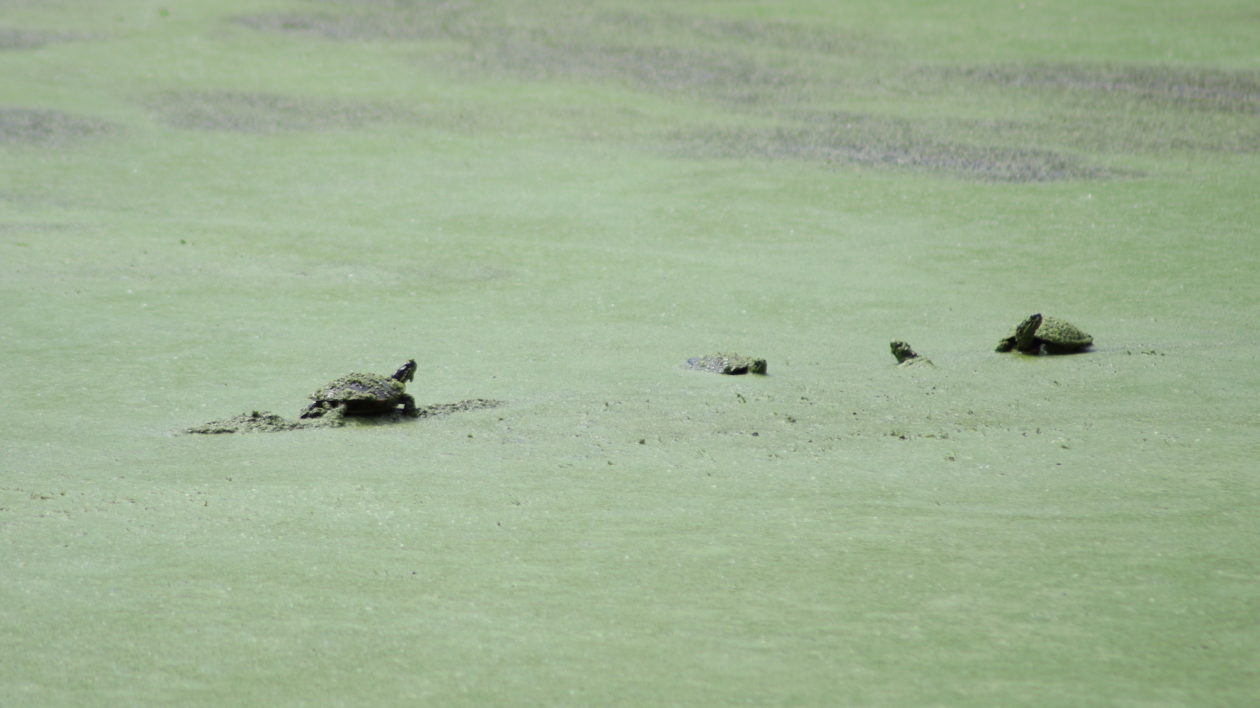
One species the Conservancy hasn’t planted is green ash, but there’s hope for recovery. This dominant floodplain tree is being devastated by emerald ash borers. Marks knew they were coming up the valley, so he and a UMass grad student went looking for them.
When they found them the Massachusetts Department of Conservation and Recreation released biological controls consisting of three parasitoid wasp species that coevolved with the borer in Asia. Two lay their eggs in borer larvae, one in the eggs. The wasp most recently released has a longer ovipositor, so it can reach larvae in older trees with thicker bark.
One of the obstacles wildland managers strive to overcome is public opposition to biological controls. It issues from ancient blunders such as the unleashing of mongooses and even house cats for presumed rodent control. These disasters were created, in Marks’ words, “not by scientists but rogue, random people who had absolutely no understanding of biology.”
Today potential biological-control species undergo rigorous “starvation tests” under strict quarantine. They pass only if they die before eating all related non-target species.
Marks stopped beside a green-ash stand. “This is where we’re studying the effects of the wasps,” he said. “We’ll monitor it for a decade. Then we’ll compare it to a stand in Agawam, Massachusetts that doesn’t have biological controls.
“With ash and elm going, we’re losing two of the floodplain dominants. You lose a species in the floodplain forests of Mississippi, and there are another 20 to take its place. If something happens to the maples here, we’re all out. You need resilience, especially in northern climates where you don’t have many species. That makes our elm work all the more important.”

Flickr
Restoration in the Anthropocene
The river has been moving west gradually except in big floods when it jumps hundreds of feet. During these events it lays down high terraces of sediments, prime farmland because of the fertility and protection from normal spring freshets.
So the Conservancy focuses its restoration on these rare and rich habitats—the seven hayfields, which it will eventually turn over to the Fish and Wildlife Service.
They blazed with blooming forbs. Bees, hummingbirds and butterflies (tiger, black and spicebush swallowtails) nectared on the flowers. Monarchs, in slower flight, deposited eggs on milkweed.
Goldfinches, late breeders because they depend on thistle down for nests and thistle seeds for nutrition, sailed and dipped, shouting “perchickory.” One hunkered in a nest atop a planted sycamore.
In the distance stood a riverside phalanx of ash, pin oak, red maple, silver maple and eastern cottonwood. The lower floodplain is too wet to farm so it takes care of itself.
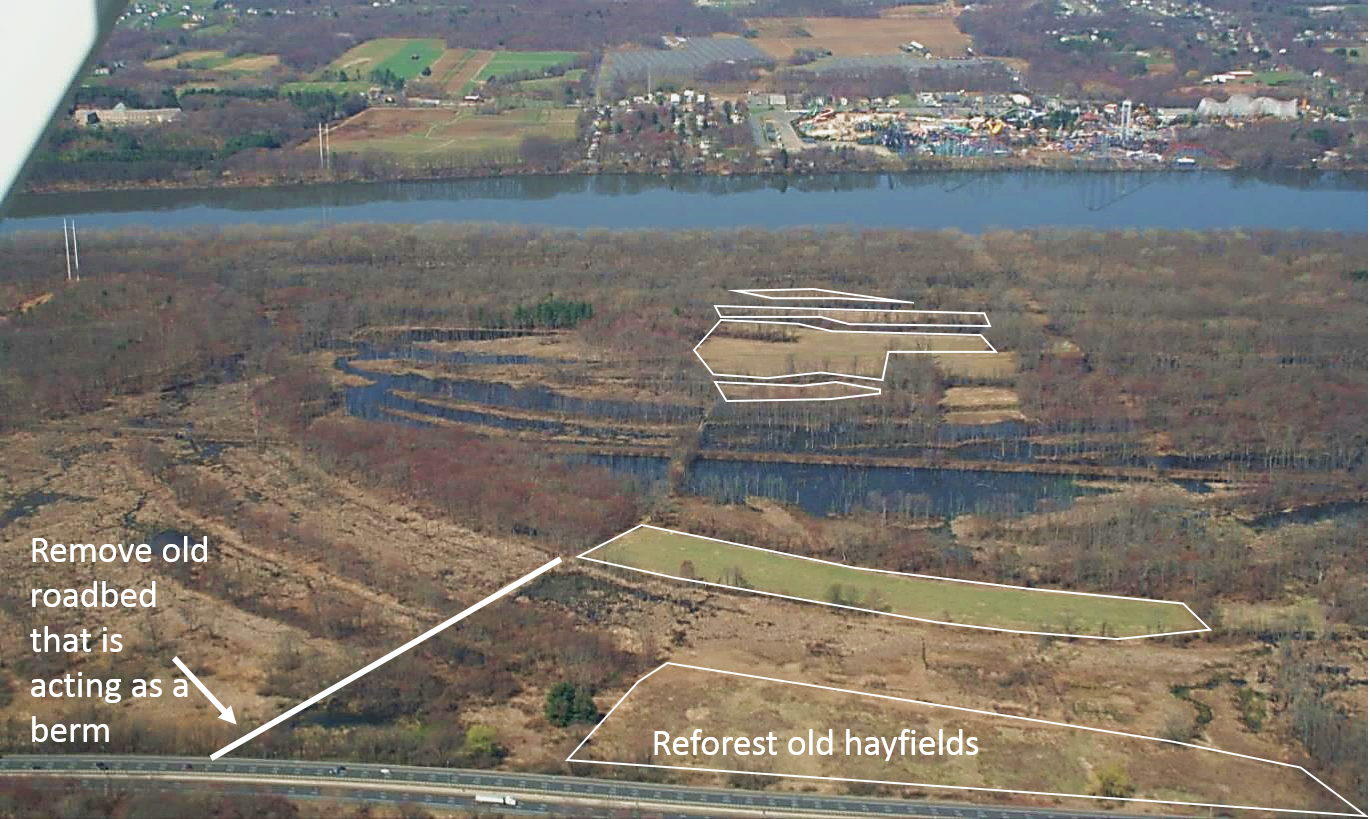
In the hayfields Marks and his team had planted thousands of trees and shrubs including resistant elms. But most were hidden by pioneers like Joe Pye weed and goldenrod. A decade hence the transition to high-terrace floodplain forest will be well underway.
Much of the hayfield acreage is protected by solar-powered electric fence. Without some form of deer control wildland restoration is now impossible in much of the East, a fact evidenced by the severely browsed seedlings planted outside the fences to provide comparative data. Managers get nowhere simply telling locals and officials that grossly overpopulated deer are nuking wildlife habitat. They need to show them.
An even bigger challenge is educating the public about the need for herbicides in wildland management. Without them the battle to save native ecosystems from invasive plants is lost.
Glyphosate, for example, is arguably the safest and most effective of all herbicides. So the Conservancy depends on it more than any of the other 18 herbicides it uses to save and restore wildlife habitat. At Fannie Stebbins it used glyphosate to clear non-native grasses from the hayfields so planted seedlings could get sun and surrounding trees could lay down native seed beds. Native wildflowers are also taking advantage of the openings.
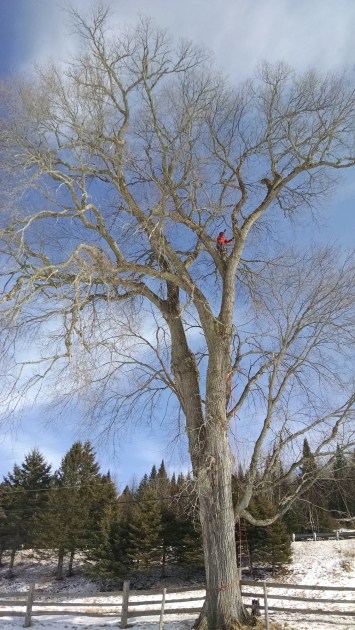
Yet a false claim, causing public panic, is circulating on social media that glyphosate is carcinogenic. Recently representatives of an environmental group knocked on Marks’ door, asking him to sign a petition to ban glyphosate on all public lands. “A ban would have blocked this restoration,” he told us.
As we hiked back to the road we kept hearing metallic grating from the far side of the river. At the cleared swath for the gas line bisecting the refuge—near the high-speed railroad line from Springfield to Hartford also bisecting the refuge—we spied the source of the racket: a roller coaster.
All three insults to nature reminded Donna and me about the vulnerability of wildland, especially floodplain forests, and the increasing need to protect and recover what we have left.
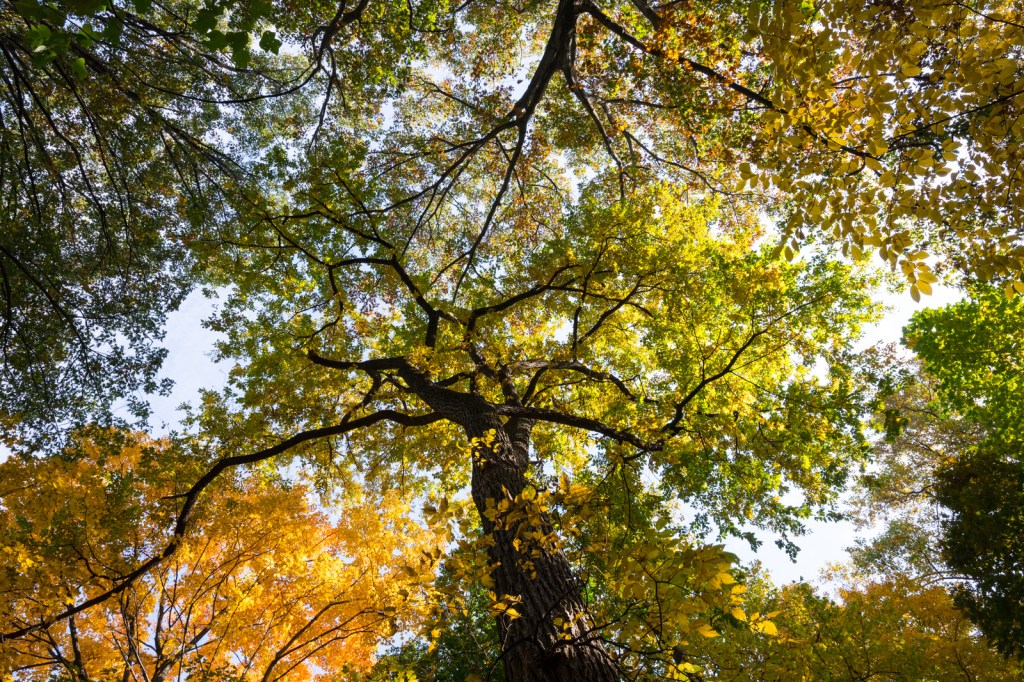



Trying to educate the public is trying at the best of times, with idiotic social media postings it is even more so. But with persistence, hard work and continued public teaching this will get accomplished. Where I live there is a relatively small man made lake, originally it was created to irrigate orange groves a distance away. The groves are virtually gone swallowed up by suburban sprawl, the lake once home to riparian species was neglected. Waste water was treated and sent down to irrigate alfalfa fields. THEN IT HAPPENED! Local merchants realized without the lake they were losing business, a resolution was passed to keep the waste water here and replenish the lake, a shallow area is becoming a wetlands and some of the riparian species are back. I was part of the study done forty years ago tried to instruct the general public and the local officials about this issue, we were ignored and laughed at. Imagine the chagrin of those same people now when I say those magic words I told you so forty years ago, but what we were dismissed as “Crazy Comie Tree Huggers.” My fellow associates moved on , I am still here, carefully stating what the research showed, but I don’t take any prisoners. the best of lick with this project, maybe we can find an effective way to prove that we need to work with Nature , not destroy it.
A response from a letter I wrote about this article;
Dear Marie,
Thank you for sending the note to Rodale Institute and for considering us a trusted source for information. I read over your email and looked back into the work of TNC to see where and how they were using herbicides. The work of Rodale Institute is focused on food and fiber production and in the concept that healthy soil is the key to a healthier population and environment. That all being said there are times when the problems poor management has created; like when we’ve introduced exotic and invasive species, require dramatic solutions that don’t always fit within Rodale Institute’s idea of a Regenerative Organic approach.
Rodale Institute always supports research and the use of practical solutions that stem from an organic prospective that don’t require synthetic pesticides. And, we recognize that decisions based solely on short-term economics often lead to negative long-term outcomes.
We would be very interested in being part of a conversation that looks into a broad systems approach to solving this and other problems where possibly more organic solutions can be put into practice.
Jeff Moyer
Rodale Institute
Chief Executive Officer
611 Siegfriedale Road
Kutztown, PA 19534
Office: 610-683-1420
Cell: 610-393-6977
Fax: 610-683-8548
Because the Future is Organic
A little too nice I think!
LFP2016: Every legitimate scientific body in the world that has studied glyphosate has repeatedly reported that there is no link between glyphosate and cancer. Not sure why you imagine that I “parroted Monsanto’s PR flaks.” I’ve had no contact with them and read nothing they’ve written. I expect they were defending their product against untruths such as some of the ones posted in this comment section. IARC also places glyphosate in the “same league” as red meat, coffee and tea. (By the way, IARC’s parent, the World Health Organization, reports that IARC is incorrect about glyphosate being a “probable carcinogen.”) Again, IARC did not study glyphosate; it reviewed existing studies. Not only did it cherry-pick those studies, it fudged their results. Reuters reports: “IARC dismissed and edited findings from a draft of its review of the weedkiller glyphosate that were at odds with its final conclusion.” Please bear in mind that IARC did not report a “link” to cancer. It merely offered speculation, placing glyphosate on its “2A List” of substances that are supposedly “probably carcinogenic.”
Everett: Glyphosate is arguably the safest herbicide available. And it is by far the most effective tool for saving and restoring fish and wildlife habitat that has been destroyed by alien plants. As I reported in the piece, TNC uses glyphosate more than any of the other 18 other herbicides it depends on for this purpose. Whoever informed you that glyphosate is “not to be used” is misinformed.
LFP2016, Everett, et al: People who believe that glyphosate causes cancer are victims of a process called an “information cascade.” A better appellation would be “disinformation cascade.” Here’s how information cascades work:
https://geneticliteracyproject.org/2019/06/04/podcast-endarkenment-how-glyphosate-cancer-hysteria-spreads-despite-ample-evidence-of-weed-killers-safety/?fbclid=IwAR36UYw1ZmeGQysZslQwBQ2BQ8-Jhtj7kjJEUlbewbCQ1gfB2b21zKh2qVs
As a member of several conservation organizations including TNC, I have been informed that glyphosate is not to be used as an herbicide. I have never used herbicides here on our property of 13+acres despite a major problem with Oriental bittersweet. Is it the official position of TNC that glyphosate is OK?
what is the life of the herbicide? I heard of a sponge applicator with Roundup on it that is put onto a cut stem of bittersweet that kills it. Is it OK to do that? No ramifications to wildlife?
Ted is wrong on a couple of statements. Biologists have introduced invasive species here in Arizona. They bring plants back from other countries to study them or grow them in a botanical garden and then they escape. Then we have to use glyphosate to control them, which has been shown to be a mild carcinogen in Europe. Farm workers and landscapers have died from cancer related to repeated heavy glyphosate exposure. I hope Ted uses proper protection to reduce exposure like I do.
Hi Nancy: Not sure what alien plants your biologists are “bringing back from other countries” and allowing to escape. That has nothing to do with what I was reporting — biological control with insects that have undergone rigorous starvation tests under strict quarantine. No, glyphosate has not been shown by any legitimate scientific body anywhere to be a carcinogen. And there is no evidence that anyone has contracted cancer from glyphosate.
I’ve been a conservationist all my life, and have a degree in forestry.
It amazes me how ” environmentalist wackos” and global warming panic -mongers have so little science education and knowledge.
I would like to see them do the hot, dirty work volunteer work I have done , alongside biologists w/ masters degrees ( in science ! ), in the Everglades. We chop out invasive , destructive foreign plant species , and spray the stumps w/ glyphosate. Otherwise, native plants would be overcome , and the dependent animals would become extinct.
Also, I have used chemicals wisely , and in moderation , for decades. Horticulture is my hobby. My property has many healthy trees and shrubs. My vegetable garden is always successful, and my well- water is pure.
A neighbor , however, doesn’t believe in chemicals. She always has little to show for her gardening efforts.
Doesn’t glyphosate kill all plants except those engineered through GMO to be unaffected? It doesn’t just kill non-native grasses, as indicated in the article. It kills all plants as I understand it. There seems to be overwhelming evidence that it causes some kinds of cancer and disrupts physical processes in creatures. It’s being banned in California and all of Germany. I think there is some science behind this, it’s not just hysteria. Glyphosate is found in every food you consume, so it’s being consumed by all human and animal and insect kind. I understand the need to restore the floodplain, but I imagine there is a way without using herbicides.
Yes, glyphosate kills virtually all plants except those engineered through GMO. I never reported or implied that it kills “just non-native grasses.” There is overwhelming evidence that it does NOT cause cancer. (Please read my other comments.) It is not banned in California. It is not found in all foods we consume. And, as I reported, there is no way the restoration could have happened without using herbicides.